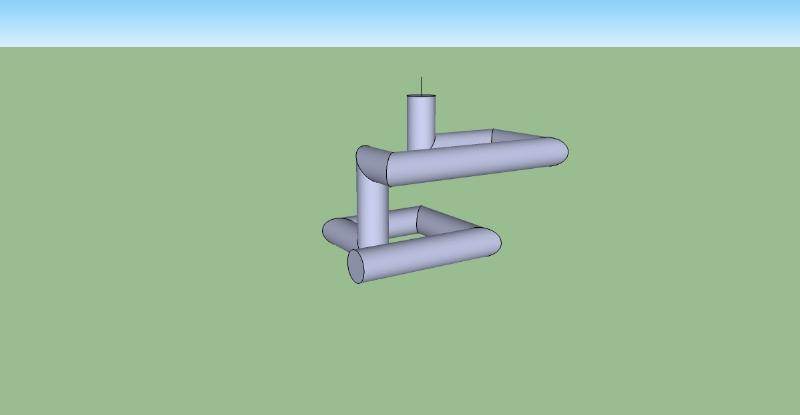I haven't had much chance to play with bells yet, but I would imagine they work beautifully.
They would call for the masonry skills to seal them, and for the shape of the heater to accommodate the height differential to conveniently place the inlet, outlet, and dome in proportion.
I have seen a number of projects that I liked, and some that I wouldn't put in a house due to iffy seals. (some are in both categories

clever projects in need of improvement, like Matt Walker's half-barrel bells).
If you want to use flues, they can give a little more control over the void spaces, and make it easier to handle your materials without advanced masonry skills and forethought. They basically make the flow more predictable for a novice, and help you visualize and protect the negative space during assembly.
They can also be used to force heat through shapes or spaces where a bell would be difficult to fit, or would not flow properly.
Our rule of thumb is:
If your system is 8" diameter, start with 20 to 50 feet heat-exchange channel length.
If your system is 6" diameter, start with 15 to 40 feet heat-exchange channel length.
(We count channel length from manifold to the beginning of the vertical chimney; chimney length/height is a separate consideration.)
For each 90 degree bend (elbow or capped T), subtract 5 feet from the maximum length.
For each foot of corrugated or rough material (for example ribbed elbows or flexible ducting - or a rough makeshift corner of brick), subtract 10 feet. (We generally recommend not to use rough materials if smooth is available).
For a vertical, indoor chimney (rising within the house to exit near / above the roof ridge), you can add a little length back. We estimate maybe 5 to 10 feet per 15 feet of vertical chimney, but this is heavily dependent on outdoor temperature.
If there is a bypass chimney primer, or the chimney is near the barrel, or the heating channels tilt upward more than 10% grade or so, you can add maybe another 5 or 10 feet for the boosted draft. (I am making that one up as I go along.)
If you plan to run the heater when it is warmer outdoors than indoors, or at near-equivalent temps ...
(like 60s F, or test-firing the stove when it is 80 outside and you feel chilly stepping into a 65 degree indoor room full of damp cob, or trying to cold-start the stove on a sunny winter afternoon when it has been alone in a freezing guest cabin for several weeks)
... then the vertical chimney is no advantage, or needs to be heated up to generate any advantage. In that case, include a bypass for priming the chimney, or subtract another 10 feet or so from your horizontal run to reduce drag and boost exit temperature.
Mass heaters that are run consistently (daily or a few times weekly) throughout the cold season, keeping the mass significantly warmer than outside air, are much easier to light and tend.
Working lengths for 8" rocket mass heaters typically come out to 20-40 feet long.
For 6" heaters, 15 to 30 or 35 feet is normal.
2 to 4 elbows is normal. 6 or 8 elbows can be done on a short system.
Your system shows 9 elbows (7or 8 if you don't count the ones that turn to vertical), so the theoretical "drag equivalent" would be about 30-45 feet on elbows alone.
You could reduce this a bit by making the pass from the bottom course to the upper one a diagonal, with 2 45-degree elbows instead of 2 90's (this softens the turbulence at the turn, and 2 45's can be counted as roughly equivalent to 1 90).
With that slight design change, you would be at 30 feet of drag-equivalent, so you could put about 20 linear feet of horizontal pipe between your elbows (including the diagonal pipe).
The most turns I have ever attempted, and will not ever try to duplicate, was 14 elbows, about 10 full elbows worth ( 900 degrees worth) of actual turns (some elbows were set at 45 or 60 rather than 90).
That system had a separate pre-heater which was used to charge up the mass before attempting to light the rocket stove, and needed it.
That's a good question whether in-mass verticals count toward the chimney total.
Since I'm not really confident in just how much draft a modestly warm vertical chimney actually offers (it differs from hour to hour, as outdoor temperatures vary), I would hesitate to tell you a specific number of feet equivalent for that slight draft boost.
-Erica W






 1
1






 1
1


















 2
2




 clever projects in need of improvement, like Matt Walker's half-barrel bells).
clever projects in need of improvement, like Matt Walker's half-barrel bells).









